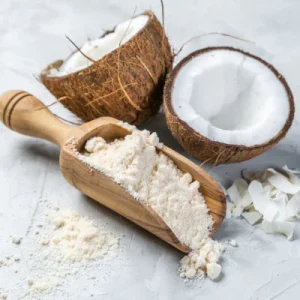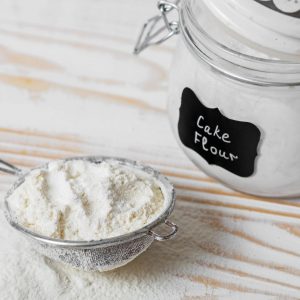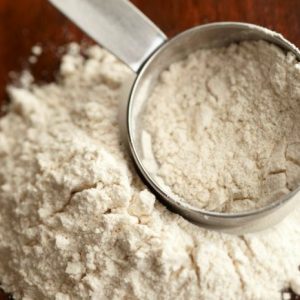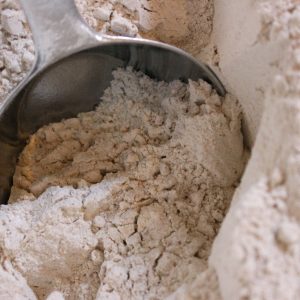Description
Introduction to Semolina Flour
Semolina flour is a coarse flour made from durum wheat, a hard wheat variety known for its high protein and gluten content. It is commonly used in pasta making but is also versatile enough to be used in a variety of other culinary applications. Semolina flour has a distinct golden color and a slightly grainy texture, making it ideal for certain types of dishes where a more robust texture is desired.
Composition and Characteristics of Semolina Flour
Semolina flour is made by grinding the endosperm of durum wheat into a coarse powder. It is rich in protein, with a protein content ranging from 12% to 15%, which is higher than that of all-purpose flour or cake flour. This high protein content gives semolina flour its unique characteristics, including its ability to develop strong gluten networks and produce well-risen, chewy baked goods.
In addition to its protein content, semolina flour is also rich in vitamins and minerals, including iron, magnesium, and B vitamins. These nutrients contribute to the nutritional value of semolina flour and support overall health and well-being.
Culinary Uses of Semolina Flour
Semolina flour is most commonly used in pasta making, where its high protein content and coarse texture help to create a firm, al dente texture in the finished pasta. It is often used in combination with other flours, such as all-purpose flour or 00 flour, to achieve the desired texture and flavor in pasta dough.
In addition to pasta, semolina flour can also be used to make a variety of other dishes, including couscous, porridge, and desserts. In Middle Eastern and North African cuisines, semolina flour is used to make a traditional dessert known as “halva,” which is made by cooking semolina flour with butter, sugar, and flavorings until it forms a dense, sweet confection.
Nutritional Benefits of Semolina Flour
Semolina flour is a nutritious ingredient that offers a range of health benefits. It is high in protein, which is essential for muscle repair, immune function, and overall health. Additionally, semolina flour is a good source of fiber, which supports digestive health, regulates blood sugar levels, and promotes satiety.
Semolina flour is also rich in iron, which is important for the production of hemoglobin and the oxygenation of red blood cells. Iron deficiency can lead to fatigue, weakness, and other health problems, so including semolina flour in your diet can help ensure that you’re getting enough of this essential nutrient.
Tips for Using Semolina Flour
When using semolina flour in recipes, it’s important to consider its unique characteristics and adjust the recipe accordingly. Here are some tips for working with semolina flour:
- Measure the flour accurately using a kitchen scale or measuring cups designed for dry ingredients.
- Use semolina flour in recipes that call for a firmer texture, such as pasta or bread.
- Experiment with different ratios of semolina flour to other flours to achieve the desired texture and flavor in your dishes.
- Store semolina flour in an airtight container in a cool, dry place to maintain its freshness and prevent moisture absorption.
By following these tips, you can make the most of semolina flour in your cooking and baking adventures, creating delicious and nutritious dishes that showcase the unique flavor and texture of this versatile ingredient.
Conclusion: Exploring the Culinary Possibilities of Semolina Flour
Semolina flour is a versatile and nutritious ingredient that offers a range of culinary possibilities. From pasta to desserts, its unique texture and flavor can elevate a variety of dishes, adding depth and complexity to your cooking. Whether you’re making homemade pasta, experimenting with new bread recipes, or trying your hand at traditional desserts, semolina flour is a valuable ingredient to have in your pantry. With its rich nutritional profile and versatile nature, semolina flour is sure to inspire creativity in the kitchen and delight your taste buds with its unique flavor and texture.





Reviews
There are no reviews yet.